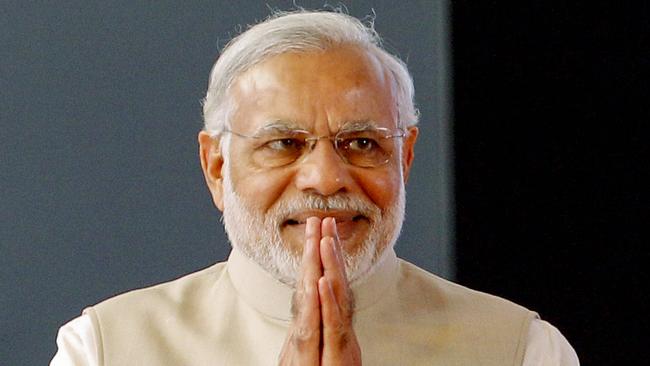India a great trade opportunity as population booms

For every $100 of goods and services Australia exports to China, we only export $14 of goods and services to India — a country that, within seven years, will overtake China to be the most populous nation on earth.
The potential for Australian exports to India will continue to grow — and it cannot be ignored.
Some 29 per cent of Indians are under the age of 15. Just under 50 per cent are under 25. These Indians who are catapulting into the Asian middle class faster than anywhere else in the region are Australia’s future consumers, analysts and business partners.
The business environment in India is very different from other Asian economies. In India, we must partner, not just invest — and we must actively seek opportunities, not just wait for the customers to come to us.
The ageing challenges that China’s policymakers are grappling with are simply not present in India — instead India will reap a dividend of demography.
While China’s population of working-age people will decline by 23 million people over the next 10 years, India’s working age population will continue to increase. Over the next decade India’s population aged between 15-64 will increase by 125 million — or an average of 12.5 million each year. That is like adding the number of people in Queensland and NSW to the working age population in India each and every year.
The greater Indian city of Delhi now has 26 million people — double that of two decades ago. Between now and 2025 Delhi’s population will increase by another seven million people to 33 million to be — according to the UN Population Division — the second largest city in the world behind Tokyo.
A combination of Delhi growing and Tokyo shrinking means Delhi is set to overtake Tokyo as the world’s most populous city around 2033.
India is growing faster than China (admittedly on a smaller base), recording an economic growth rate of 7.4 per cent for the past year compared with China’s 6.9 per cent. According to the International Monetary Fund, India’s growth over the past year has been faster than any major economy in the world.
The Australia-India relationship goes back a long way, and much further than our mutual love of cricket. In 1799, 11 years after the first European settlement, Australia’s first commodity export, coal, left the Port of Newcastle bound for Bengal.
Doing business in India is very different from doing business in China. State-owned enterprises are certainly present, but they are not as dominant as they are in China. Further, India is pushing reforms to boost foreign direct investment in the country.
While India brings with it the same challenges of doing business of many developing countries — corruption, policy instability, lack of infrastructure, an overzealous bureaucracy — India under Prime Minister Narendra Modi has attempted to address many of these challenges. Modi, in the belief that sunshine is the best disinfectant, has significantly increased the openness of government data and information. According to the Global Open Data Index, India ranks a respectable 17th; comparatively, China ranks 93rd on the same index.
As India grows, economically and in terms of population, this is a great opportunity to step up and provide the goods and services a growing population needs. Only 1865 Australian businesses export to India, about a third the number of the 5900 Australian businesses that export to China.
The real value-add for Australian business comes from service export opportunities to India.
We are already taking advantage of increased Indian travellers wanting to see the sights of Australia. A record 228,100 Indian tourists visited Australia over the past year, and similarly, in the education space, 36,500 Indian students commenced studying in Australia during 2015.
However, beyond tourism and education there is substantial room for improvement. Taking advantage of services export opportunities is very different than taking advantage of goods export opportunities.
Delivering services more often than not involves being where your customers are, dealing with their culture, and on their own terms. It means Australian firms with an Indian presence offering financial services to a new middle class, it involves delivering health services in hospitals and health clinics in India, it involves delivering professional services across the country. As the Productivity Commission recently found, barriers to setting up commercial presences abroad are particularly an issue for Australian services exporters to India.
A free-trade agreement with India, expected to be concluded soon, will help Australia get over these speed humps. Most significantly, an agreement should provide better access for Australia’s services exports by reducing important barriers to entry for financial services, tourism and education. In particular, the ban on insurance companies establishing branches in India, and the lack of scope for Australian law firms to establish a commercial presence, both need to change.
If we are going to thrive in the Asian century, we should turn our heads slightly further left, not just having a focus on China. If we get it right, we can add an additional one billion middle class consumers to our customer lists.
Alistair Campbell was an adviser to federal treasurer, Joe Hockey, between 2013 and 2015.


